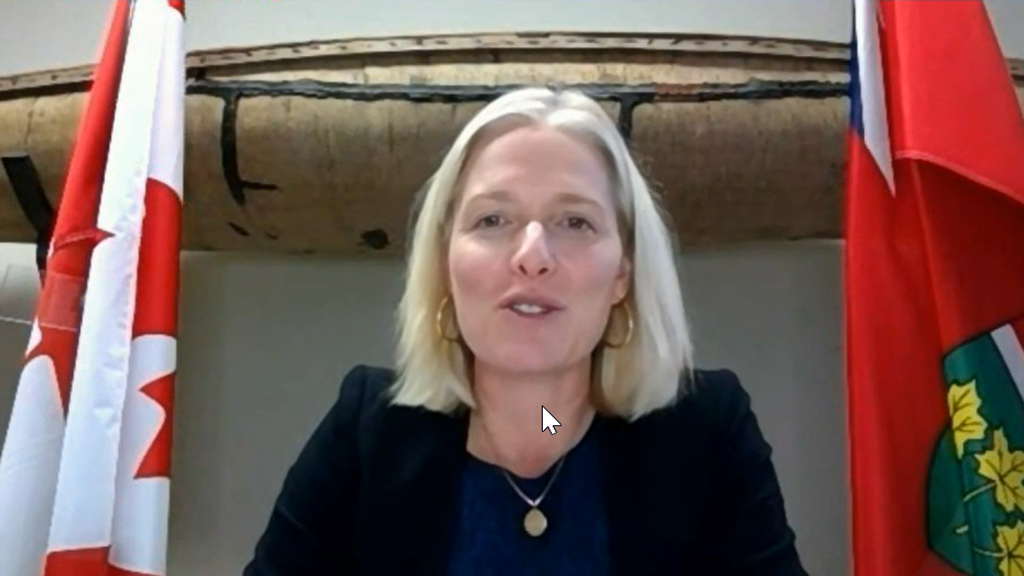Canada’s minister of infrastructure and communities has committed to developing a national infrastructure assessment initiative to identify long-term infrastructure needs and priorities.
Catherine McKenna made the announcement at the 28th annual Canadian Council for Public-Private Partnerships virtual conference. The three-day event kicked off Nov. 17.
“We have a direct government investment in infrastructure, more than $180 billion over a decade (Investing in Canada Plan) and we have the Canada Infrastructure Bank drawing in private capital to make public dollars go even further but we need to draw it all together, how are we going to do that?,” McKenna stated to delegates in her online keynote address.
“I’m focused on developing Canada’s first-ever national infrastructure assessment. This means using data and evidence to identify Canada’s long-term infrastructure needs and priorities, linking our investments with our policy outcomes and ensuring a plan for recovery that creates jobs, competitive advantage and long-term growth by building a cleaner, more inclusive, more prosperous future for all Canadians.”
Similar assessments are already underway around the globe, including in the U.K., Australia and New Zealand.
“Both the expert panel on sustainable finance and the advisory council on economic growth emphasize how important such a national inventory and analysis is to better outcomes,” said McKenna. “I’m making it my mission to get it done and to do it right.”
In her address, she talked about the federal government’s plan for infrastructure.
We need to have triple benefits and stretch every single dollar,
— Catherin McKenna
Canada’s Minister of Infrastructure and Communities
“Infrastructure is key to getting out of the economic crisis. It’s key to building jobs. It’s key to our long- term prosperity and it’s key to building a cleaner and more resilient future,” said McKenna.
“I’m going to make the case for why significant, smart investment in our country’s infrastructure – including using innovative financing models through the Canada Infrastructure Bank – will keep us strong, health and prosperous whatever 2021 throws at us.”
Across Canada there are approximately 290 active P3s in various stages of development, procurement, construction and operations, said McKenna.
“When the prime minister asked me to take on this really important portfolio a year ago I set three overarching priorities: one, to work collaboratively to get projects built quickly, creating jobs and economic growth; two, to ensure the money we invest is helping us move to a low carbon future that is cleaner, more resilient and more prosperous; and three to build infrastructure, more public transit, high-speed broadband, wastewater, clean energy and beyond that.
“This is about also building more equitable and inclusive communities. COVID-19 didn’t change these priorities, it just made them all the more immediate and urgent.”
The government’s infrastructure plan was not put on hold due to the pandemic, she pointed out.
“When COVID-19 came along, I recognized that we needed to adjust our programs to help Canadians deal with the economic and health crisis,” said McKenna.
“Since March 1, under the Investing in Canada Infrastructure program, we’ve approved over 700 projects representing a federal investment of over $1.2 billion.
“We’ve also launched a new COVID-19 stream within that program with the federal government investing 80 cents of every dollar so that provinces can work on a wide range of pandemic resilient projects – projects like upgrading schools and long-term care homes with things like HCA and physical distancing measures or building new parks, cycling and walking paths to help get Canadians outside and stay active during the pandemic.”
It’s not enough for governments to shovel out infrastructure dollars, it’s about the outcomes Canadians get in return, McKenna noted.
“We need to have triple benefits and stretch every single dollar,” she said. “Every dollar needs to create immediate jobs and grow the economy. It needs to combat climate change. It needs to promote social equality.”
In addition to using direct public investments, public-private partnerships are also being used by all levels of government to deliver infrastructure assets, relieving fiscal pressures, managing risks and getting results, McKenna added.
“We can build for a more resilient and cleaner future but everyone needs to be part of this, all hands on deck,” McKenna said.
“So that that means the private sector is part of it, Indigenous communities, provinces and territories, municipalities. This is really about getting things built. We’re looking forward to continuing to partner and innovate.
“Our actions and policies will shape this moment in history and what comes after. It’s all about building a better Canada.”
Follow the author on Twitter @DCN_Angela.











Recent Comments